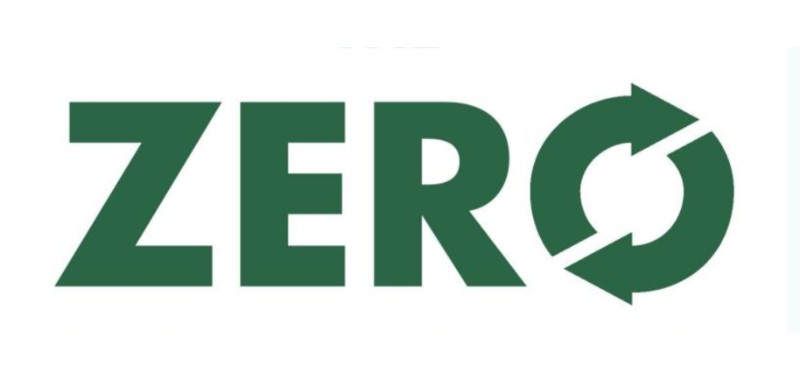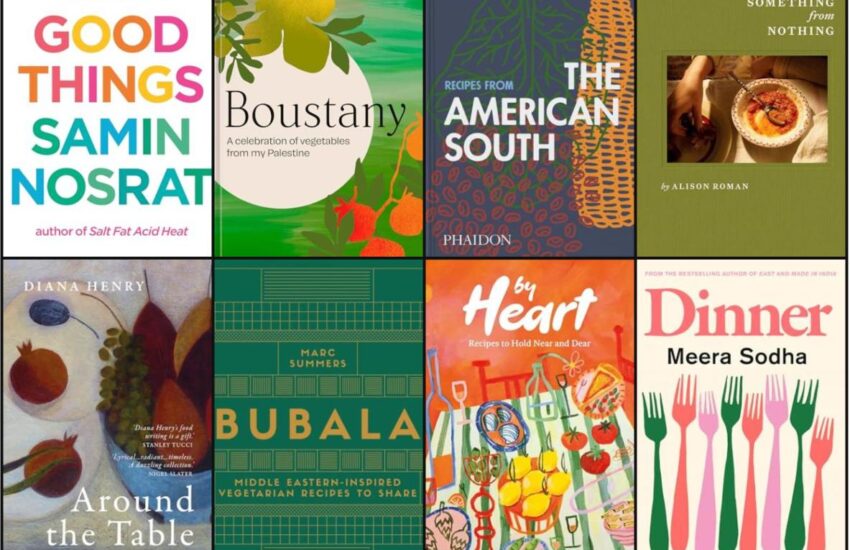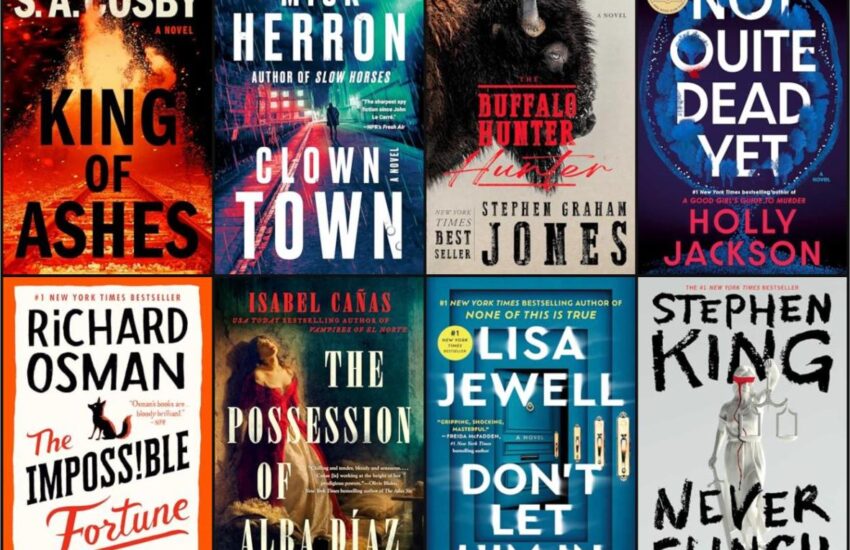The Best Zero Waste Books
“What are the best books about Going Zero Waste?” We looked at 89 of the top Zero Waste books, aggregating and ranking them so we could answer that very question!
The top 20 titles, all appearing on 2 or more “Best Zero Waste” book lists, are ranked below by how many lists they appear on. The remaining 50+ titles, as well as the lists we used are in alphabetical order at the bottom of the page.
Happy Scrolling!
Top 20 Books About Going Zero Waste
20 .) 101 Ways to Live Cleaner and Greener for Free written by Anna Pitt
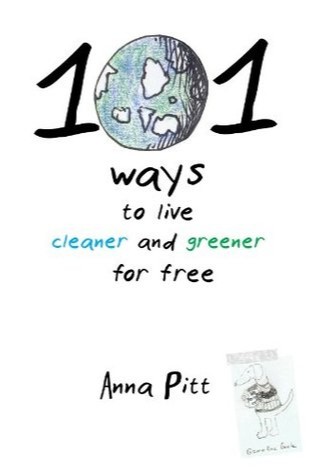
Lists It Appears On:
- Book Riot 2
- Goodreads
Do YOU worry about climate change and global warming but don’t know where to start? Do YOU want to reduce waste and SAVE MONEY too? You are just minutes away from lots of great money saving ways to reduce waste and save resources YOU too can make a real difference TODAY – and EVERY day Get your copy of 101 Ways to Live Cleaner and Greener for Free NOW and start saving ££££s straight away! Do you wonder whether trying to live a greener lifestyle makes any difference at all? Have you ever wondered about the facts and figures behind green living? Does it wind you up that trying to save the planet seems to cost the earth? But going ‘green’ doesn’t have to cost you money and, yes, it does make a difference. In this book you will find 101 simple ways in which your family can live a little bit greener without it costing a penny. And it goes a lot further too, because, by following some of these straightforward tips, you will actually save money. Lots of money! 101 Ways gives you tips on how to reduce food waste, how to save water, how to save energy and fuel and how to reuse and recycle your stuff. It gives you the science and maths behind these efforts and clearly shows why and how doing all this is worthwhile. Go on…you know you want to…find out how you can start a green revolution in your family today!
19 .) A Zero Waste Life: In Thirty Days written by Anita Vandyke
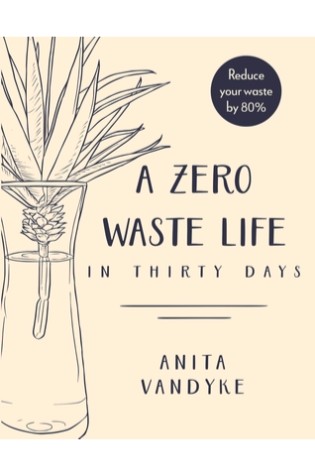
Lists It Appears On:
- Book Riot
- Goodreads
Anita Vandyke wants to show you that by living a zero waste life, you actually gain more—more time, more money, and more life. Her simple, practical guide shows you how by changing your daily habits you can eliminate plastic from your life in 30 days. A Zero Waste Life is a guide to the small changes you can make to radically reduce your waste, without losing your lifestyle. Based on 30 lifestyle “rules” and handy tips, this practical book offers a fresh “can do” approach to reducing your waste and living a cleaner, kinder life. Isn’t that what we all want—a life of happiness, a life of luxury, a life that isn’t wasted?
18 .) Diet for a Hot Planet: The Climate Crisis at the End of Your Fork and What You Can Do about It written by Anna Lappe
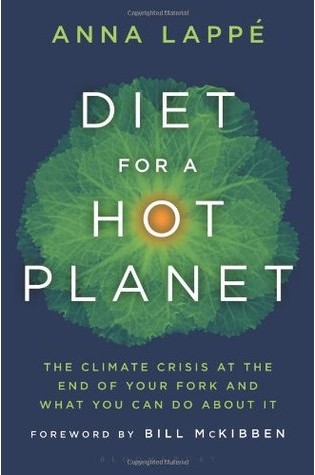
Lists It Appears On:
- Goodreads
- Zero Waste Memoirs
Beyond what we already know about “food miles” and eating locally, the global food system is a major contributor to climate change, producing as much as one-third of greenhouse gas emissions. How we farm, what we eat, and how our food gets to the table all have an impact. And our government and the food industry are willfully ignoring the issue rather than addressing it. In Anna Lappé’s controversial new book, she predicts that unless we radically shift the trends of what food we’re eating and how we’re producing it, food system-related greenhouse gas emissions will go up and up and up. She exposes the interests that will resist the change, and the spin food companies will generate to avoid system-wide reform. And she offers a vision of a future in which our food system does more good than harm, with six principles for a climate friendly diet as well as visits to farmers who are demonstrating the potential of sustainable farming. In this measured and intelligent call to action, Lappé helps readers understand that food can be a powerful starting point for solutions to global environmental problems.
17 .) Goodbye, Things: The New Japanese Minimalism written by Fumio Sasaki
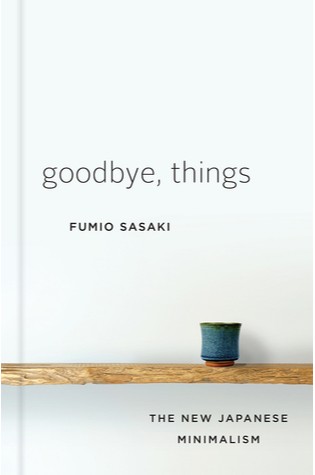
Lists It Appears On:
- Book Riot 2
- Green Indy Blog
Fumio Sasaki is not an enlightened minimalism expert; he’s just a regular guy who was stressed at work, insecure, and constantly comparing himself to others—until one day he decided to change his life by reducing his possessions to the bare minimum. The benefits were instantaneous and absolutely remarkable: without all his “stuff,” Sasaki finally felt true freedom, peace of mind, and appreciation for the present moment. Goodbye, Things explores why we measure our worth by the things we own and how the new minimalist movement will not only transform your space but truly enrich your life. Along the way, Sasaki modestly shares his personal minimalist experience, offering tips on the minimizing process and revealing the profound ways he has changed since he got rid of everything he didn’t need. The benefits of a minimalist life can be realized by anyone, and Sasaki’s humble vision of true happiness will open your eyes to minimalism’s potential.
16 .) How to Reduce Your Carbon Footprint: 500 Simple Ways to Save Energy, Resources, and Money written by Joanna Yarrow
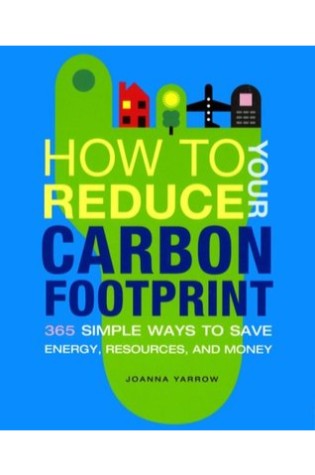
Lists It Appears On:
- Goodreads
- Zero Waste Wisdom
How to Reduce Your Carbon Footprint is the world citizen’s guide to pushing back the advance of global warming. This colorful handbook offers 500 practical, easily achievable ideas that conserve energy, prevent pollution, and save money. Did you know that unplugging appliances and cell phone chargers when not in use can reduce electricity billsby 10 percent? Or that recycling just one glass bottle saves enough power to run a computer for 30 minutes? Whether the subject is jet travel, dishwashing, or any of the 50 topics in the book, surprising statistics and innovative graphics will inspire action and demonstrate that simple habits can lead to big results.
15 .) No. More. Plastic written by Martin Dorey
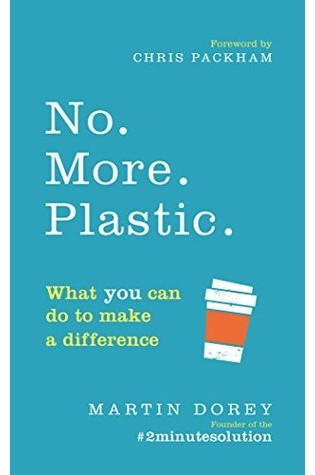
Lists It Appears On:
- Book Riot
- Goodreads
Discover what you can do to save the planet from plastic. Start now. All it takes is 2 minutes of your time. ‘I read this book yesterday and I’ve done three things today and that is testament to Martin’s brilliant vision and ideas. Now it’s your turn!’ Chris Packham ‘Once, plastic was the miracle material. Now it’s the monster. We all need to cut down our plastic consumption and join Martin’s #2minutesolution anti-plastic movement. I’m in.’ Julia Bradbury Open this book with your children, give it to your friends. Share your #2minutesolution on twitter and instagram and inspire others. Martin Dorey, anti-plastics expert, has been working to save our beaches from plastic for the past 10 years. His Beach Clean Foundation and global call to arms #2minutebeachclean has been taken up by people all over the world, and has proven that collective small actions can add up to a big difference. Together we can fix this.
14 .) Quenching the Thirst: Sustainable Water Supply and Climate Change written by George Annandale
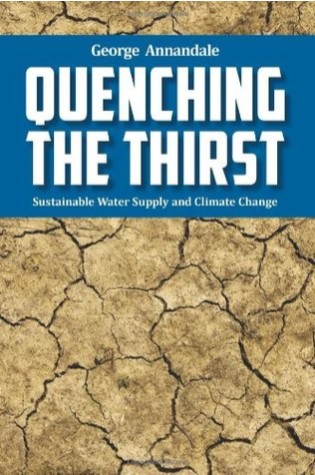
Lists It Appears On:
- Goodreads
- Zero Waste Memoirs
This book was conceived out of a deep concern about the impact of pending global water shortages. Increased demand for water by a rapidly growing world population, decreased water availability due to climate change and the ever-worsening condition of water supply infrastructure are great concerns. In the absence of decisive action water shortage will be the norm in both developed and developing nations. The author, during a life-long career in water resources engineering, witnessed the hardships resulting from inadequate water supply throughout the world. Those experiences motivated him to present the solution to this global challenge in a manner understandable to the general public and professionals alike. Dedicated to developing the essential insight necessary to address the challenge, this book presents a thorough analysis of the nature and magnitude of the problem, and its solution. The author provides practical guidance on how to end the current practice of relentlessly and irreversibly depleting our water resources, and he reveals how to reliably and sustainably supply water in the future, in spite of the anticipated impacts of climate change. The book is essential reading for anyone interested in and concerned about the impacts of climate change on future water supplies. The concrete approach to reliably and sustainably supply fresh water to both current and future generations provides clear direction on how to proceed.
13 .) Strategy for Sustainability: A Business Manifesto written by Adam Werbach
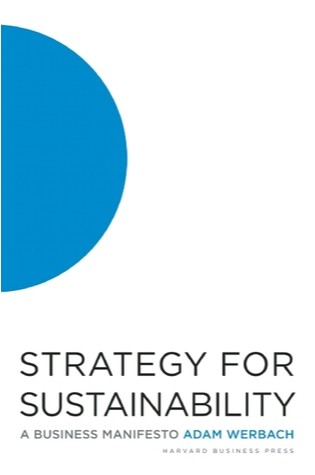
Lists It Appears On:
- Goodreads
- Zero Waste Memoirs
The definitive work on business strategy for sustainability by the most authoritative voice in the conversation. More than ever before, consumers, employees, and investors share a common purpose and a passion for companies that do well by doing good. So any strategy without sustainability at its core is just plain irresponsible – bad for business, bad for shareholders, bad for the environment. These challenges represent unprecedented opportunities for big brands – such as Clorox, Dell, Toyota, Procter & Gamble, Nike, and Wal-Mart – that are implementing integral, rather than tangential, strategies for sustainability. What these companies are doing illuminates the book’s practical framework for change, which involves engaging employees, using transparency as a business tool, and reaping the rewards of a networked organizational structure. Leave your quaint notions of corporate social responsibility and environmentalism behind. Werbach is starting a whole new dialogue around sustainability of enterprise and life as we know it in organizations and individuals. Sustainability is now a true competitive strategic advantage, and building it into the core of your business is the only means to ensure that your company – and your world – will survive.
12 .) The Human Age: The World Shaped By Us written by Diane Ackerman
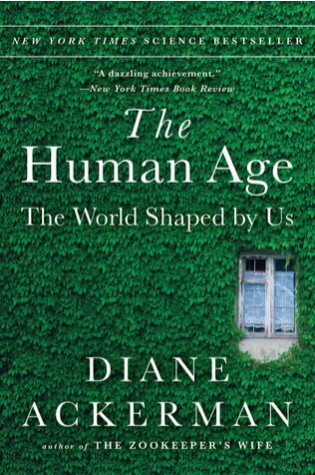
Lists It Appears On:
- Goodreads
- Zero Waste Memoirs
Award-winning nature writer Diane Ackerman confronts the fact that the human race is now the single dominant force of change on the planet. Humans have “subdued 75 per cent of the land surface, concocted a wizardry of industrial and medical marvels, strung lights all across the darkness.” We now collect the DNA of vanishing species in a “frozen ark,” equip orangutans with iPads, create wearable technologies and synthetic species that might one day outsmart us. With her distinctive gift for making scientific discovery intelligible to the layperson, Ackerman takes us on an exciting journey to understand this bewildering new reality, introducing us to many of the people and ideas now creating–perhaps saving–the future. The Human Ageis a surprising, optimistic engagement with the dramatic transformations that have shaped, and continue to alter, our world, our relationship with nature and our prospects for the future.
11 .) The Upcycle: Beyond Sustainability – Designing for Abundance written by William McDonough
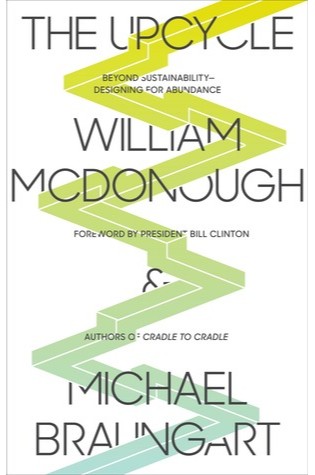
Lists It Appears On:
- Goodreads
- Zero Waste Memoirs
From the authors of Cradle to Cradle, we learn what’s next: The Upcycle The Upcycle is the eagerly awaited follow-up to Cradle to Cradle, one of the most consequential ecological manifestoes of our time. Now, drawing on the green living lessons gained from 10 years of putting the Cradle to Cradle concept into practice with businesses, governments, and ordinary people, William McDonough and Michael Braungart envision the next step in the solution to our ecological crisis: We don’t just use or reuse and recycle resources with greater effectiveness, we actually improve the natural world as we live, create, and build. For McDonough and Braungart, the questions of resource scarcity and sustainability are questions of design. They are practical-minded visionaries: They envision beneficial designs of products, buildings, and business practices—and they show us these ideas being put to use around the world as everyday objects like chairs, cars, and factories are being reimagined not just to sustain life on the planet but to grow it. It is an eye-opening, inspiring tour of our green future as it unfolds in front of us. The Upcycle is as ambitious as such classics as Rachel Carson’s Silent Spring—but its mission is very different. McDonough and Braungart want to turn on its head our very understanding of the human role on earth: Instead of protecting the planet from human impact, why not redesign our activity to improve the environment? We can have a beneficial, sustainable footprint. Abundance for all. The goal is within our reach.
10 .) The Zero Waste Solution: Untrashing the Planet One Community at a Time written by Paul Connett
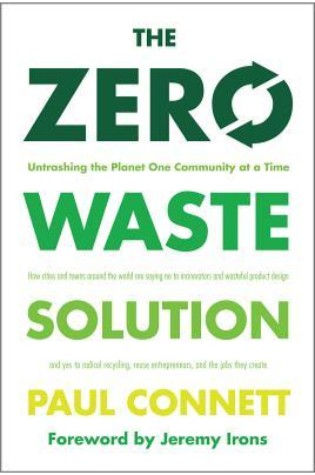
Lists It Appears On:
- Goodreads
- VegaNudge
Waste is something we all make every day but often pay little attention to. That’s changing, and model programs around the globe show the many different ways a community can strive for, and achieve, zero-waste status.Scientist-turned-activist Paul Connett, a leading international figure in decades-long battles to fight pollution, has championed efforts to curtail overconsumption and keep industrial toxins out of our air and drinking water and bodies. But he’s best known around the world for leading efforts to help communities deal with their waste in sustainable ways–in other words, to eliminate and reuse waste rather than burn it or stow it away in landfills. In The Zero Waste Solution, Connett profiles the most successful zero-waste initiatives around the world, showing activists, planners, and entrepreneurs how to re-envision their community’s waste-handling process–by consuming less, turning organic waste into compost, recycling, reusing other waste, demanding nonwasteful product design, and creating jobs and bringing community members together in the process. The book also exposes the greenwashing behind renewed efforts to promote waste incinerators as safe, nontoxic energy suppliers, and gives detailed information on how communities can battle incineration projects that, even at their best, emit dangerous particles into the atmosphere, many of which remain unregulated or poorly regulated. An important toolkit for anyone interested in creating sustainable communities, generating secure local jobs, and keeping toxic alternatives at bay.
9 .) The Zero-Waste Lifestyle: Live Well by Throwing Away Less written by Amy Korst
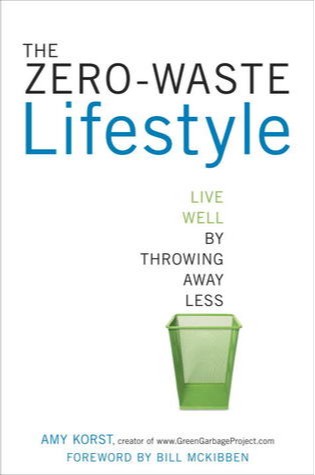
Lists It Appears On:
- Goodreads
- VegaNudge
A practical guide to generating less waste, featuring meaningful and achievable strategies from the blogger behind The Green Garbage Project, a yearlong experiment in living garbage-free. Trash is a big, dirty problem. The average American tosses out nearly 2,000 pounds of garbage every year that piles up in landfills and threatens our air and water quality. You do your part to reduce, reuse, and recycle, but is it enough? In The Zero-Waste Lifestyle, Amy Korst shows you how to lead a healthier, happier, and more sustainable life by generating less garbage. Drawing from lessons she learned during a yearlong experiment in zero-waste living, Amy outlines hundreds of easy ideas—from the simple to the radical—for consuming and throwing away less, with low-impact tips on the best ways to: • Buy eggs from a local farm instead of the grocery store • Start a worm bin for composting • Grow your own loofah sponges and mix up eco-friendly cleaning solutions • Purchase gently used items and donate them when you’re finished • Shop the bulk aisle and keep reusable bags in your purse or car • Bring your own containers for take-out or restaurant leftovers By eliminating unnecessary items in every aspect of your life, these meaningful and achievable strategies will help you save time and money, support local businesses, decrease litter, reduce your toxic exposure, eat well, become more self-sufficient, and preserve the planet for future generations.
8 .) To Die For: Is Fashion Wearing Out the World? written by Lucy Siegle
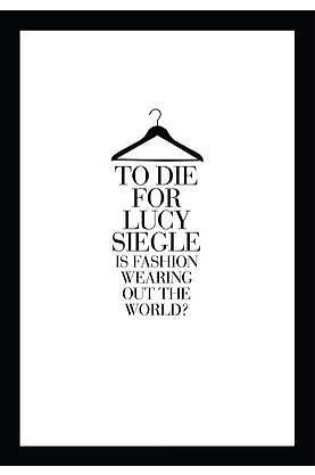
Lists It Appears On:
- Book Riot
- Goodreads
An expose of the fashion industry written by the Observer’s ‘Ethical Living’ columnist, portraying current practice as inhumane and environmentally devastating. Siegle believes that, in spite of current problems, it is possible to be an ‘ethical fashionista’, and she sets out her ideas on how such a situation could be achieved.”
7 .) Wear No Evil: How to Change the World with Your Wardrobe written by Greta Eagan
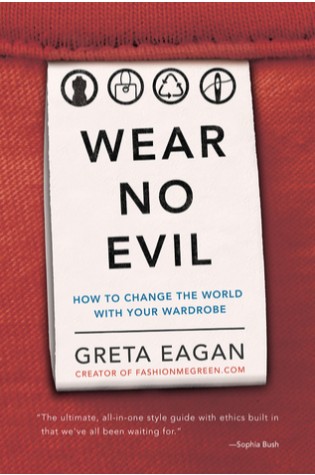
Lists It Appears On:
- Goodreads
- Zero Waste Memoirs
Have you ever wondered, “How can I inherently do good while looking good?” Wear No Evil has the answer, and is the timely handbook for navigating both fashion and ethics. It is the style guide with sustainability built in that we’ve all been waiting for. As a consumer, you regain your power with every purchase to support the causes and conditions you already advocate in other areas of your life (such as local or organic food), while upholding your sense of self through the stylish pieces you use to create your wardrobe.
6 .) Cradle to Cradle: Remaking the Way We Make Things written by William McDonough
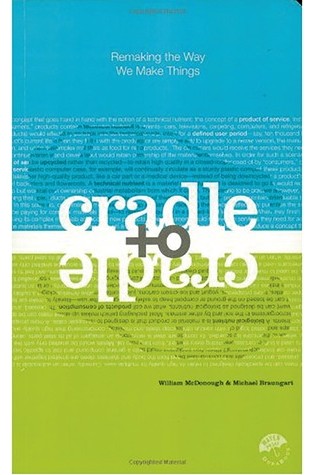
Lists It Appears On:
- Goodreads
- Zero Waste Memoirs
- Zero Waste Wisdom
“Reduce, reuse, recycle,” urge environmentalists; in other words, do more with less in order to minimize damage. But as architect William McDonough and chemist Michael Braungart point out in this provocative, visionary book, such an approach only perpetuates the one-way, “cradle to grave” manufacturing model, dating to the Industrial Revolution, that creates such fantastic amounts of waste and pollution in the first place. Why not challenge the belief that human industry must damage the natural world? In fact, why not take nature itself as our model for making things? A tree produces thousands of blossoms in order to create another tree, yet we consider its abundance not wasteful but safe, beautiful, and highly effective. Waste equals food. Guided by this principle, McDonough and Braungart explain how products can be designed from the outset so that, after their useful lives, they will provide nourishment for something new. They can be conceived as “biological nutrients” that will easily reenter the water or soil without depositing synthetic materials and toxins. Or they can be “technical nutrients” that will continually circulate as pure and valuable materials within closed-loop industrial cycles, rather than being “recycled” — really, downcycled — into low-grade materials and uses. Drawing on their experience in (re)designing everything from carpeting to corporate campuses, McDonough and Braungart make an exciting and viable case for putting eco-effectiveness into practice, and show how anyone involved with making anything can begin to do as well.
5 .) Garbology: Our Dirty Love Affair with Trash written by Edward Humes
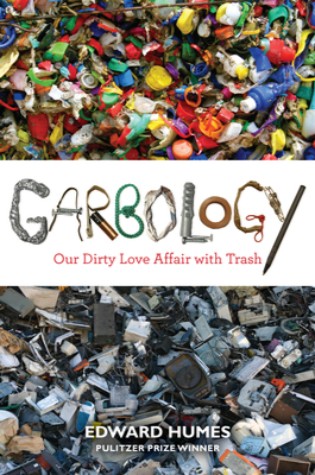
Lists It Appears On:
- Goodreads
- Toward Zero Waste
- Zero Waste Wisdom
A Pulitzer Prize–winning journalist takes readers on a surprising tour of America’s biggest export, our most prodigious product, and our greatest legacy: our trash. The average American produces 102 tons of garbage across a lifetime and $50 billion in squandered riches are rolled to the curb each year. But our bins are just the starting point for a strange, impressive, mysterious, and costly journey that may also represent the greatest untapped opportunity of the century. In Garbology, Edward Humes investigates trash—what’s in it; how much we pay for it; how we manage to create so much of it; and how some families, communities, and even nations are finding a way back from waste to discover a new kind of prosperity. Along the way , he introduces a collection of garbage denizens unlike anyone you’ve ever met: the trash-tracking detectives of MIT, the bulldozer-driving sanitation workers building Los Angeles’ Garbage Mountain landfill, the artists residing in San Francisco’s dump, and the family whose annual trash output fills not a dumpster or a trash can, but a single mason jar. Garbology reveals not just what we throw away, but who we are and where our society is headed. Waste is the one environmental and economic harm that ordinary working Americans have the power to change—and prosper in the process.
4 .) No Impact Man written by Colin Beavan
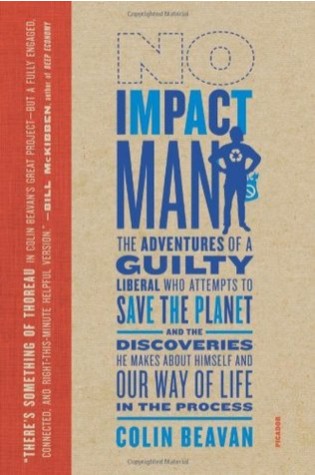
Lists It Appears On:
- Goodreads
- Toward Zero Waste
- Zero Waste Wisdom
The Adventures of a Guilty Liberal Who Attempts to Save the Planet, and the Discoveries He Makes About Himself and Our Way of Life in the Process A guilty liberal finally snaps, swears off plastic, goes organic, becomes a bicycle nut, turns off his power, and generally becomes a tree-hugging lunatic who tries to save the polar bears and the rest of the planet from environmental catastrophe while dragging his baby daughter and Prada-wearing, Four Seasons–loving wife along for the ride. And that’s just the beginning. Bill McKibben meets Bill Bryson in this seriously engaging look at one man’s decision to put his money where his mouth is and go off the grid for one year—while still living in New York City—to see if it’s possible to make no net impact on the environment. In other words, no trash, no toxins in the water, no elevators, no subway, no products in packaging, no air-conditioning, no television . . . What would it be like to try to live a no-impact lifestyle? Is it possible? Could it catch on? Is living this way more satisfying or less satisfying? Harder or easier? Is it worthwhile or senseless? Are we all doomed or can our culture reduce the barriers to sustainable living so it becomes as easy as falling off a log? These are the questions at the heart of this whole mad endeavor, via which Colin Beavan hopes to explain to the rest of us how we can realistically live a more “eco-effective” and by turns more content life in an age of inconvenient truths.
3 .) The Story of Stuff: How Our Obsession with Stuff is Trashing the Planet, Our Communities, and our Health—and a Vision for Change written by Annie Leonard
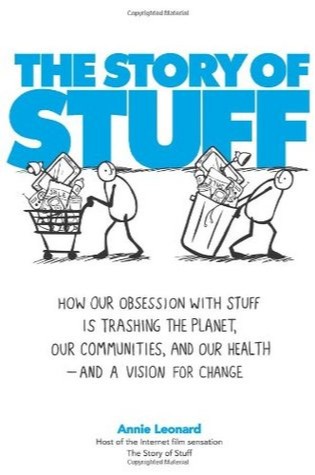
Lists It Appears On:
- Book Riot 2
- Goodreads
- Green Indy Blog
- Model 4 Green Living
We have a problem with Stuff. With just 5 percent of the world’s population, we’re consuming 30 percent of the world’s resources and creating 30 percent of the world’s waste. If everyone consumed at U.S. rates, we would need three to five planets! This alarming fact drove Annie Leonard to create the Internet film sensation The Story of Stuff, which has been viewed over 10 million times by people around the world. In her sweeping, groundbreaking book of the same name, Leonard tracks the life of the Stuff we use every day—where our cotton T-shirts, laptop computers, and aluminum cans come from, how they are produced, distributed, and consumed, and where they go when we throw them out. Like Rachel Carson’s Silent Spring, The Story of Stuff is a landmark book that will change the way people think—and the way they live. Leonard’s message is startlingly clear: we have too much Stuff, and too much of it is toxic. Outlining the five stages of our consumption-driven economy;from extraction through production, distribution, consumption, and disposal;she vividly illuminates its frightening repercussions. Visiting garbage dumps and factories around the world, Leonard reveals the true story behind our possessions; why it’s cheaper to replace a broken TV than to fix it; how the promotion of “perceived obsolescence” encourages us to toss out everything from shoes to cell phones while they’re still in perfect shape; and how factory workers in Haiti, mine workers in Congo, and everyone who lives and works within this system pay for our cheap goods with their health, safety, and quality of life. Meanwhile we, as consumers, are compromising our health and well-being, whether it’s through neurotoxins in our pillows or lead leaching into our kids’ food from their lunchboxes—and all this Stuff isn’t even making us happier! We work hard so we can buy Stuff that we quickly throw out, and then we want new Stuff so we work harder and have no time to enjoy all our Stuff. . .
2 .) Plastic-Free: How I Kicked the Plastic Habit and How You Can Too written by Beth Terry
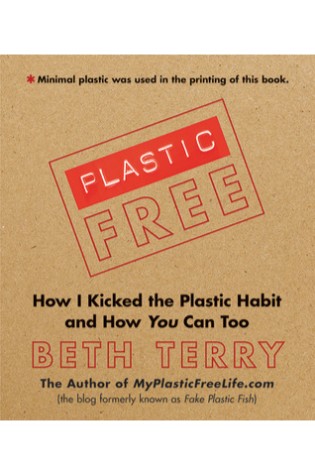
Lists It Appears On:
- Book Riot
- Book Riot 2
- Goodreads
- Toward Zero Waste
- VegaNudge
Like many people, Beth Terry didn’t think an individual could have much impact on the environment. But while laid up after surgery, she read an article about the staggering amount of plastic polluting the oceans and decided then and there to kick her plastic habit. Now she wants to teach you how you can too. In her quirky and humorous style well known to the readers of her popular blog, My Plastic-Free Life, Terry provides personal anecdotes, stats about the environmental and health problems related to plastic, and personal solutions and tips on how to limit your plastic footprint. Terry includes handy lists and charts for easy reference, ways to get involved in larger community actions, and profiles of individuals–Plastic-Free Heroes who have gone beyond personal solutions to create a change on a larger scale. Plastic-Free also includes chapters on letting go of eco-guilt, strategies for coping with overwhelming problems, and ways to relate to other people who aren’t as far along on the plastic-free path. Both a practical guide and the story of a personal journey from helplessness to empowerment, Plastic-Free is a must-read for anyone concerned about the ongoing health and happiness of themselves, their children, and the planet.
1 .) Zero Waste Home: The Ultimate Guide to Simplifying Your Life by Reducing Your Waste written by Bea Johnson
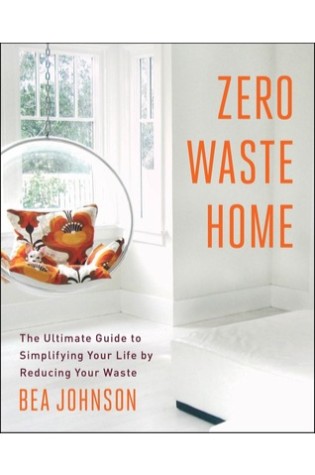
Lists It Appears On:
- Book Riot
- Book Riot 2
- Goodreads
- Green Indy Blog
- Toward Zero Waste
- Zero Waste Wisdom
Part inspirational story of Bea Johnson (the “Priestess of Waste-Free Living”) and how she transformed her family’s life for the better by reducing their waste to an astonishing one liter per year; part practical, step-by-step guide that gives readers tools and tips to diminish their footprint and simplify their lives.Many of us have the gnawing feeling that we could and should do more to limit our impact on the environment. But where to begin? How? Many of us have taken small steps, but Bea Johnson has taken the big leap. Bea, her husband Scott, and their two young sons produce just one quart of garbage a year. In Zero Waste Home, Bea Johnson shares her story and lays out the system by which she and her family have reached and maintained their own Zero Waste goals—a lifestyle that has yielded bigger surprises than they ever dreamed possible. They now have more time together as a family, they have cut their annual spending by a remarkable 40%, and they are healthier than they’ve ever been, both emotionally and physically. This book shares how-to advice and essential secrets and insights based on the author’s own experience. She demystifies the process of going Zero Waste with hundreds of easy tips for sustainable living that even the busiest people can integrate: from making your own mustard, to packing kids’ lunches without plastic, to cancelling your junk mail, to enjoying the holidays without the guilt associated with overconsumption. Stylish and completely relatable, Zero Waste Home is a practical, step-by-step guide that gives readers the tools and tips to improve their overall health, save money and time, and achieve a brighter future for their families—and the planet.
The 50+ Additional Best Books For Going Zero Waste
| # | Books | Authors | Lists |
| 21 | A Life Less Throwaway: The Lost Art of Buying for Life | Green Indy Blog | |
| 22 | All You Need Is Less: The Eco-friendly Guide to Guilt-Free Green Living and Stress-Free Simplicity | Madeleine Somerville | Goodreads |
| 23 | Animal Vegetable Miracle | Green Indy Blog | |
| 24 | Big Green Purse: Use Your Spending Power to Create a Cleaner, Greener World | Green Indy Blog | |
| 25 | Compost: A Family Guide to Making Soil from Scraps | Ben Raskin | Goodreads |
| 26 | Compost: How To Use, How To Make, Everyday Tips | Book Riot 2 | |
| 27 | Crazy, Sexy Diet | Kris Carr | Model 4 Green Living |
| 28 | Detrash Your Life in 90 Days: Your Complete Guide to the Art of Zero Waste Living | Green Indy Blog | |
| 29 | Drawdown: The Most Comprehensive Plan Ever Proposed to Reverse Global Warming | Green Indy Blog | |
| 30 | Eaarth | Bill McKibben | Model 4 Green Living |
| 31 | Eating Animals | Jonathan Safran Foer | Model 4 Green Living |
| 32 | Eco-Chic Home: Rethink, Reuse & Remake Your Way to Sustainable Style | Emily Anderson | Goodreads |
| 33 | EcoMind | Frances Moore Lappé | Model 4 Green Living |
| 34 | Every Woman’s Guide To Saving The Planet | Natalie Isaacs | Goodreads |
| 35 | F**k Plastic: 101 ways to free yourself from plastic and save the world | Various | Goodreads |
| 36 | Folks, This Ain’t Normal | Joel Salatin | Model 4 Green Living |
| 37 | From Seed to Skillet: A Guide to Growing, Tending, Harvesting, and Cooking Up Fresh, Healthy Food to Share with People You Love | Jimmy Williams | Goodreads |
| 38 | Give a Sh*t: Do Good. Live Better. Save the Planet. | Ashlee Piper | Goodreads |
| 39 | Green Washed: Why We Can’t Buy Our Way to a Green Planet | Green Indy Blog | |
| 40 | Herbs for Natural Beauty | Green Indy Blog | |
| 41 | Het Zero Waste Project | Jessie Kroon | Goodreads |
| 42 | How to Make and Use Compost: The Ultimate Guide | Nicky Scott | Goodreads |
| 43 | In Defense of Food | Michael Pollan | Model 4 Green Living |
| 44 | Little House in the Suburbs: Backyard Farming and Home Skills for Self-Sufficient Living | Deanna Caswell | Goodreads |
| 45 | MagnifEco | Kate Black | Model 4 Green Living |
| 46 | Make Garbage Great: The Terracycle Family Guide to a Zero-Waste Lifestyle | Tom Szaky | Goodreads |
| 47 | Making It: Radical Home Ec for a Post-Consumer World | Green Indy Blog | |
| 48 | My Zero-Waste Kitchen: Easy Ways to Eat Waste Free | Kate Turner | Goodreads |
| 49 | New Minimalism: Decluttering and Design for Sustainable, Intentional Living | Green Indy Blog | |
| 50 | Notes on a Nervous Planet | Matt Haig | Goodreads |
| 51 | Outsmart Waste: The Modern Idea of Garbage and How to Think Our Way Out of It | Tom Szaky | Goodreads |
| 52 | Plastic Purge | Book Riot 2 | |
| 53 | Self-sufficiency Household Cleaning | Book Riot 2 | |
| 54 | Shots of Simplicity’s Zero Waste Tag | Meredith Tested | |
| 55 | Simple Acts to Save Our Planet: 500 Ways to Make a Difference | Michelle Neff | Goodreads |
| 56 | Simple Matters: Living with Less and Ending Up with More | Erin Boyle | Goodreads |
| 57 | Slow Death by Rubber Duck: How the Toxic Chemistry of Everyday Life Affects Our Health | Rick Smith | Goodreads |
| 58 | Small is Beautiful: Economics as if People Mattered | E. F. Schumacher | Zero Waste Memoirs |
| 59 | Sustainable Home: Practical projects, tips and advice for maintaining a more eco-friendly household | Christine Liu | Goodreads |
| 60 | The 22 Day Revolution | Marco Borges | Model 4 Green Living |
| 61 | The Edible Front Yard: The Mow-Less, Grow-More Plan for a Beautiful, Bountiful Garden | Ivette Soler | Goodreads |
| 62 | The End of Food: How the Food Industry Is Destroying Our Food Supply–And What You Can Do about It | Thomas F. Pawlick | Goodreads |
| 63 | The Good in Nature and Humanity: Connecting Science, Religion, and Spirituality with the Natural World | Stephen R. Kellert | Goodreads |
| 64 | The Hunt for the Golden Mole | Richard Girling | Zero Waste Memoirs |
| 65 | The Joy of Less: A Minimalist Guide to Declutter, Organize, and Simplify | VegaNudge | |
| 66 | The Life Changing Magic of Tidying Up | Marie Kondo | Model 4 Green Living |
| 67 | The Minimalist Home: A Room-By-Room Guide to a Decluttered, Refocused Life | Joshua Becker | Goodreads |
| 68 | The Omnivore’s Dilemma | Michael Pollan | Model 4 Green Living |
| 69 | The Responsibility Revolution | Jeffrey Hollender & Bill Breen | Zero Waste Memoirs |
| 70 | The Responsibility Revolution: How the Next Generation of Businesses Will Win | Jeffrey Hollender | Goodreads |
| 71 | The Sustainability Secret | Kip Andersen and Keegan Kuhn | Model 4 Green Living |
| 72 | The Third Plate: Field Notes on the Future of Food | Green Indy Blog | |
| 73 | The World Without Us | Alan Weisman | Model 4 Green Living |
| 74 | The Zero Waste Grocery Store Challenge: Trader Joe’s | Meredith Tested | |
| 75 | The Zero Waste Lifestyle | Book Riot 2 | |
| 76 | This Changes Everything: Capitalism vs. The Climate | Green Indy Blog | |
| 77 | Three Months of Living Zero Waste | Meredith Tested | |
| 78 | Toxin Toxout: Getting Harmful Chemicals Out of Our Bodies and Our World | Bruce Lourie | Goodreads |
| 79 | Turning the Tide on Plastic: How Humanity | Lucy Siegle | Goodreads |
| 80 | Waste Not | Erin Rhoads | Goodreads |
| 81 | Waste-Free Kitchen Handbook: A Guide to Eating Well and Saving Money By Wasting Less Food | VegaNudge | |
| 82 | We’re Doomed. Now What?: Dispatches from the Far Side of Hope | Roy Scranton | Goodreads |
| 83 | Wellth | Jason Wachob | Model 4 Green Living |
| 84 | What’s Gotten into Us?: Staying Healthy in a Toxic World | McKay Jenkins | Goodreads |
| 85 | Worms Eat My Garbage | Mary Appelhof | Goodreads |
| 86 | Zero Waste | Book Riot | |
| 87 | Zero Waste: Simple Life Hacks to Drastically Reduce Your Trash | Green Indy Blog | |
| 88 | Zero Waste: Weniger Müll ist das neue Grün | Shia Su | Goodreads |
| 89 | Życie zero waste. Żyj bez śmieci i żyj lepiej | Katarzyna Wągrowska | Goodreads |
10 Best Zero Waste Book Sources/Lists
| Source | Article |
| Book Riot | Books To Help You Take the Plunge for Zero Waste |
| Book Riot 2 | Get Ready For Zero Waste Week With These Books! |
| Goodreads | Popular Zero Waste Books |
| Green Indy Blog | Dive into this huge list of zero waste books |
| Meredith Tested | Book List: What to Read if You’re Interested in Zero Waste, Plastic Free |
| Model 4 Green Living | THE BEST BOOKS ON SUSTAINABLE, HEALTHY LIVING |
| Toward Zero Waste | Must-Read Zero Waste Books — Toward Zero Waste |
| VegaNudge | The 6 Best Books on Zero Waste |
| Zero Waste Memoirs | 10 Must-Read Books on Sustainability |
| Zero Waste Wisdom | Top 5 Zero Waste Books |
